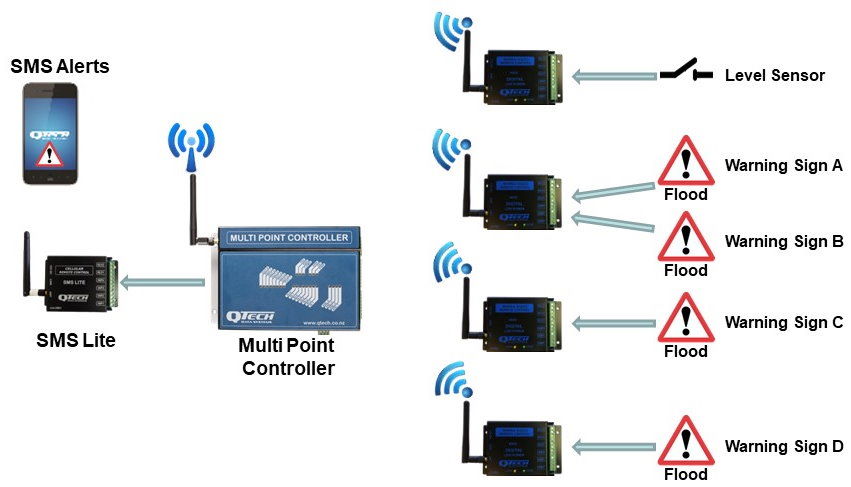Author: datranadmin
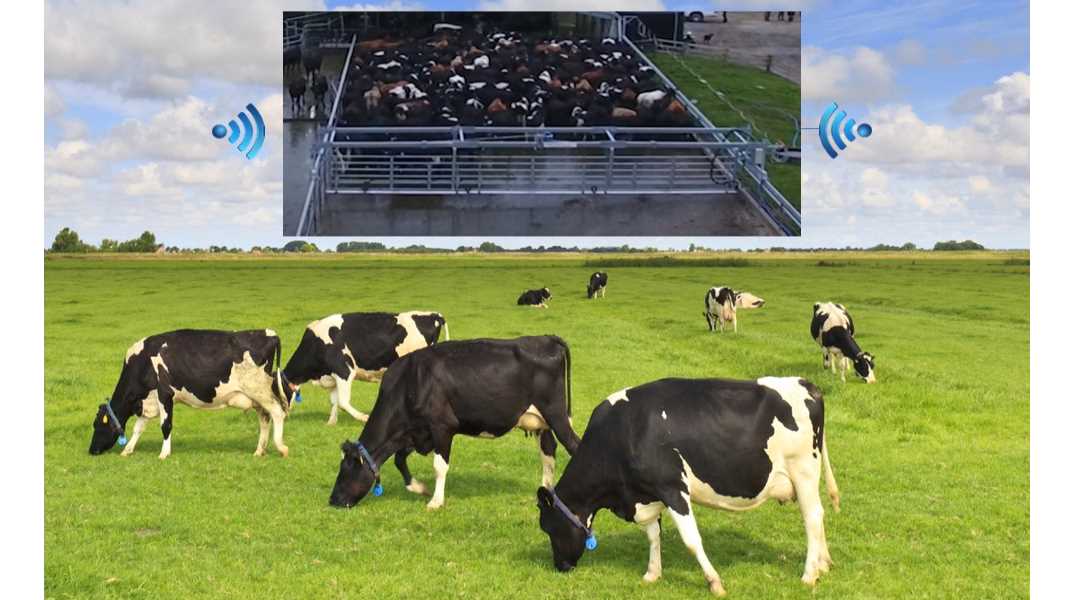
Backing gates are slow moving motorised barriers that control the dairy herd movement into milking platforms.
The motor drive units used are often water powered devices. Using water removes the need for long cable runs and the water also helps with the yard clean up.
A recent enquiry needed to add remote valve control to an existing water powered backing gate. No electrical supply was available for the valve control system and the control buttons needed to be in the dairy shed control panel.
The popular low power Wireless Point to Point (WP2P) systems were utilised.
Solar power was provided from our versatile RSS01 solution.
The solar supply provides power to the WP2P module and powers the latching solenoid on the water drive unit. The solenoid controls the water flow to the drive unit and uses the QTech LSD01 latching driver. Reliable radio communications is provided by our industrial grade antennas, including low profile options at the backing gate.
DairyNZ recommends these considerations for backing gate control options:
- Install an audible alarm or buzzer to sound when moving. The buzzer could be integrated into the RSS01 solar enclosure.
- Limit backing gate movement to a maximum of five seconds to prevent animal discomfort and stress.
The DATRAN Australis items required for this project were:
Qty 1x PD8810E-WP2P Digital 900MHZ Wireless Point to Point Pair
Qty 1x PD9241 900MHz 3dB Fiberglass Whip antenna
Qty 1x PD5414 Power Pack 230V AC Input, 13.8V 250mA Output
Qty 1x PD5801 RSS01 Solar Station (Solar panel, case, invertor, 12V battery, mount)
Qty 1x PD9245 Cellular Multiband Low Profile Antenna
Qty 3x PD5811 Latching Solenoid Interface LSD01
We have previously supplied another backing gate control solution for electrically powered systems.
This solution utilised the Q48 P2P.
The Q48 P2P was selected as six digital outputs were needed to be controlled from the dairy shed.
The Q48 P2P was retro installed into an electrically powered backing gate system, as the existing control cable was becoming unreliable. The replacement cost of the cabling was high, but the likely downtime during the milking season was prohibitive for the farmer.

The existing waterproof pendant control was also reused in the wireless Q48 P2P system, which helped the dairy operators.
We will help you select the best solution for your backing gate control requirement.

We were approached to provide a control solution for remote latching solenoids over a distance of 1200m.
Latching solenoids are commonly used in the irrigation market as they are very low power.
Latching solenoids require a special driver circuit which controls the polarity of the switching signals.
Latching solenoid control can easily be achieved with our WP2P system and a LSD01 latching solenoid interface to manage the polarity switching.
This previous post details a simple on off remote control of a latching solenoid.
However, this enquiry needed a system to interface to the existing irrigation controller.
The irrigation controller’s output was already for a latching solenoid – so how do we transmit that over more than a kilometre?
A novel system was prescribed to convert the latching output to a relay closure, then transmit the relay status, and then convert it to latching at the solenoid end.
The solution used both the QTech LSD01 and the IPC relay module, usually used for solid set irrigation projects.
The WP2P systems’ relay outputs are momentary operation from the connected input switches. However they also have a “fail safe” option allowing you to select what happens if the communication link goes down.
If you need control for remote latching solenoids or remote control of valves – with or without latching relays – please contact us for assistance.
For those interested, an “H bridge” circuit is usually used for solenoid polarity switching.
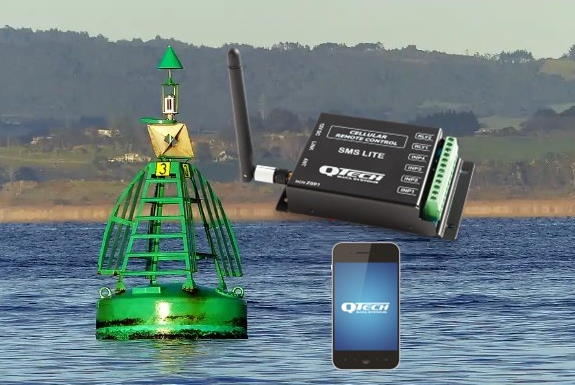
The international standards and conventions for maritime buoys is a complex and massively confusing topic, even for seasoned sailors.
Whilst we cannot simplify the standards, DATRAN Australia can help provide remote control of the harbour buoy lighting, using text messages over the 4G cellular network.
A customer in Queensland has recently selected our SMS Lite for it’s buoy lighting control.
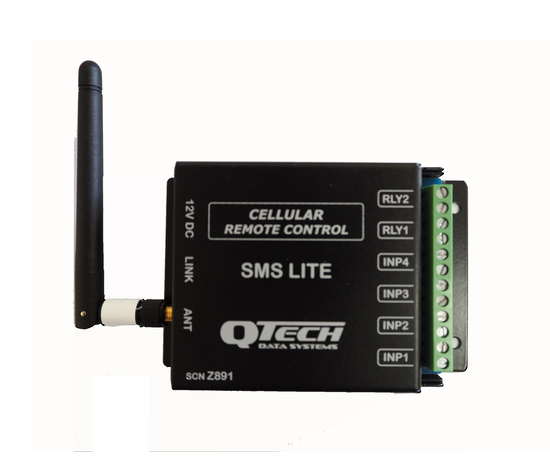
Remote control is especially important with solar powered buoy lighting systems. Energy conservation is crucial for these systems to ensure that the lighting is always available when needed.
The SMS Lite is low power and ideal for being solar powered. Features include pulsed outputs, input debouncing and an automatic low voltage alert.
DATRAN Australia also offers fully packaged solar powered systems for both the SMS Lite and the popular 900MHz Wireless Point to Point (WP2P) radio systems.
MSQ Queensland have a fascinating article outlines the complexities of international buoy lighting conventions. https://www.msq.qld.gov.au/Safety/Navigation-buoys-marks-and-beacons
The SMS Lite is widely used in Australia, not just for harbour buoy lighting control. The most popular applications include the remote starting of generators, flood detection warning systems and holiday home heating control.
More details of these applications and projects can be found here.
Do you have an application that needs remote monitoring and control?
Please get in touch with us now to discuss how our SMS Lite and Wireless Point to Point systems can help provide a remote control and monitoring solution.
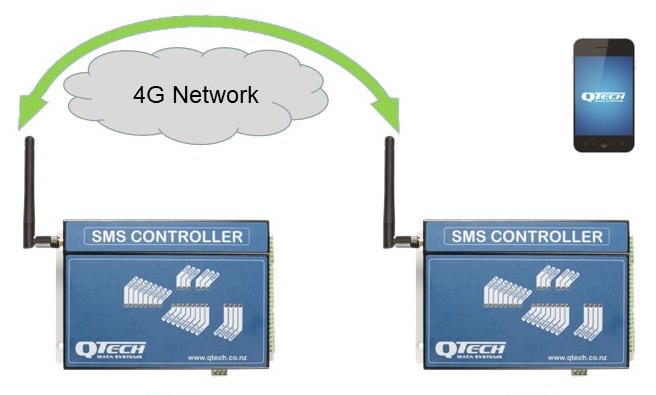
Our SMS Controllers can perform “controller to controller texting”, allowing a mini cellular control network to be created.
We were approached by a large New Zealand dairy cooperative for a cellular monitoring solution.
The recent cyclone had impacted the existing control system – the cellular network being used was damaged and became unavailable.
An alternate and standalone system, on a different 4G network was requested. This would provide risk mitigation and diversity for the crucial effluent management.
A strong 4G cellular signal was available at both monitoring sites and high-capacity battery backups were already installed.
The initial customer requirement included:
My situation requires the use of two controllers, whereby the inputs on the monitoring controller are matched with the outputs of the second controller. There are two analogue signals and six digital signals. I am wondering if the QTech SMS Controllers are suitable for this application? Can SMS controllers be used with any network provider by adding our intended SIM card?
The terrain of the site was also challenging. The massive milk processing plant sat between the effluent pump and the control shed. The site terrain would likely prevent a low power radio solution, such as our 900MHz WP2P wireless point to points (WP2P) being viable.
This SMS Controllers are easily setup in the “SMS Messenger” configuration software.
The customer downloaded the software and experimented with the functionality.
Click here to download SMS Messenger
See yourself the powerful control and monitoring capabilities.
Need a simpler cellular solution?
Still highly configurable, but all set up is done by sending a few text messages from the master phone number.

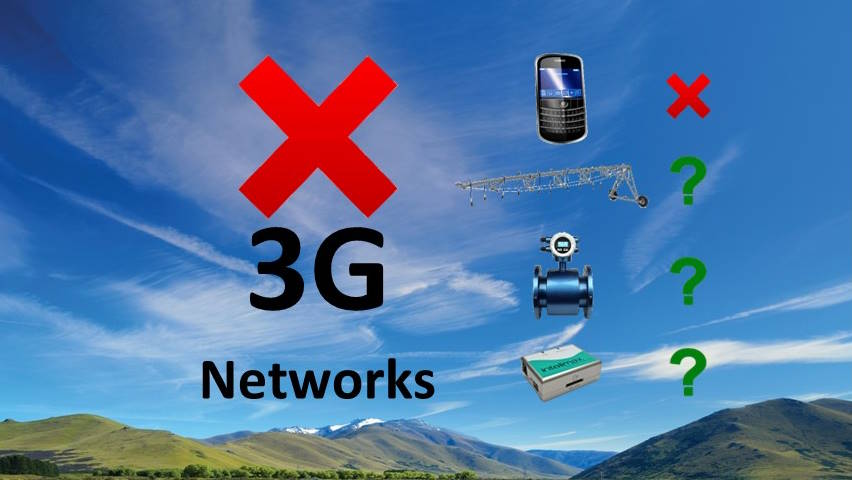
The 3G cellular networks are closing and this does not just affect old cell phones…
The telcos have published closure dates for the 3G networks in Australia.
It is now time to review all your cellular devices, including farm and irrigation telemetry.
3G networks closing is not “new news” as some 3G networks have already been switched off overseas.
We encourage you all to complete the following:
- Review what 3G devices you still use
- Establish a device replacement or upgrade plan
- Check with your telco for updates to their plan for your region
Please remember to check all of these in your business, on your farm and irrigation and control systems:
Auto Diallers – Do you still use any older controllers to send alarms for pump faults etc?
The SMS Lite is the ideal 4G controller for sending alarms and alerts.
Flow Meters – If they use cellular telemetry, has it been updated to use 4G?
Centre Pivot Controllers – Has the pivot control panel module been upgraded to 4G?
Soil Moisture Probes – If they use cellular telemetry, has it been updated to use 4G?
Tractors and Machinery – If they use cellular telemetry, has it already been updated to use 4G?
Building Alarm Monitoring – If it is remotely monitored, has the cellular device already been updated to use 4G?
DATRAN Australia has the SMS Lite, SMS Controller and CM910 Modem – all are 4G devices.
Click here for more product details.
We also stock cellular antennas, including the latest 5G capable device.
The 3G Cellular networks are closing – working with your service providers and making sure your installations and farm is prepared, will be time well spent.
If your modem and system is already 4G capable, no change is needed.
Please get in touch with us now to discuss how our cellular SMS solutions can help.
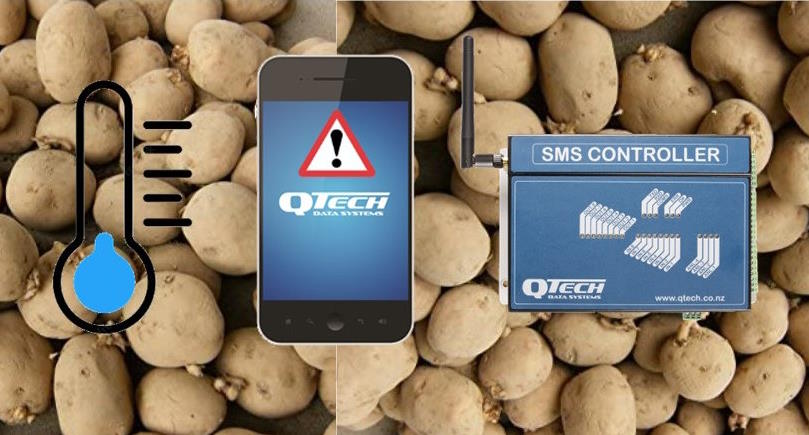
Our 4G cellular SMS controller is used to monitor a client’s cold room.
The cold room is used to store high value seed potatoes. Seed potatoes need to be kept cold and dry for long periods each year, to ensure they are ready for next season’s crop.
Power outages are becoming more common, so a way to remotely monitor the status and temperature of the cold room is needed.
The site has good 4G coverage so a Cellular SMS system would be a simple and appropriate solution, especially as there is no Wi-Fi signal on site.
An extract from our client’s specification:
We need periodic alerts letting the farmer know the cold room is ‘healthy’ and the refrigeration compressor is running. I would also be looking for alerts letting the farmer know of failures, and which failure specifically. I’d estimate 4 – 5 events triggering an alert text message. A remote start would be required with a confirmation text, and a remote reset would also be required. Another key factor would be the cold room temperature. I’d love for the farmer to get an SMS with the current temperature periodically, that way he knows where he is at. Two staff phones would be set up to receive alerts, but we must have the ability to change these numbers as needed. Is this an easy to arrange function for the farmer to manage going forward?
The antenna selection for this application is crucial. The cold room construction uses a lot of metalwork, so an outside mounting antenna is needed. The cold room roof is also extra tall so a custom 10m length antenna system is used.
Please contact us now to discuss your cold room remote monitoring requirements and how our technology can help.
Our popular SMS Lite has four inputs for monitoring equipment and two relays for control.
Always keep potatoes in a dry, frost-free area with good ventilation.
While professional potato growers understand all the best practises, if you are storing seed potatoes at home,
this advice from Potatoes NZ is very useful:
*Store potatoes between 5-10°C. Use a thermometer to ensure storage area is at the correct temperature.
*Keep potatoes away from strong smelling foodstuffs or chemicals.
*Clean store areas regularly.
*Avoid storing potatoes in strong light – natural or artificial – as they will turn green.
*Keep potato stacks low (no more than 6 bags high) to avoid squashing.
*Do not handle potatoes more often than is absolutely necessary as they bruise easily.
*Do not use potatoes if they feel damp in the bag.
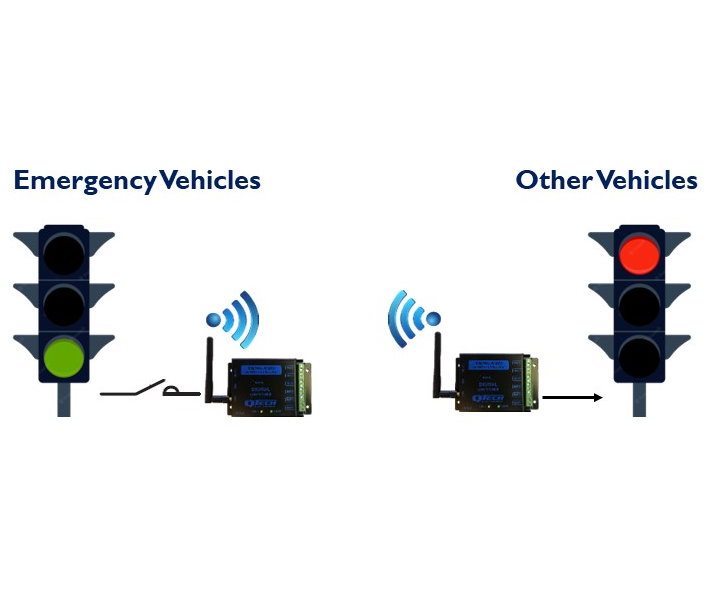
Modern traffic light control systems use a sophisticated electronic controller to help meet the complex requirements of regional traffic authorities.
These traffic light controllers have multiple external inputs to enable special configurations for railway crossings, pedestrian requests, automated cycle lanes and emergency vehicle overrides.
The project requirement was for the driver of the emergency response vehicle to press a button as they leave the station. The button press needs to override the current traffic light sequences, giving the emergency vehicle green traffic lights.
This button operates one of the digital inputs on the WP2P module and also opens the garage door.
At the traffic controller, the output of the second WP2P module is wired to the controller. When activated, the controller overrides all the nearby traffic lights and performs the required interlocking. This ensures that emergency vehicles have green traffic lights and right of way through all the local traffic signals. This helps to safely speed up their response time and gives the other road users a clear signal.

The WP2P low power radio system has a range of several kilometres with optional antenna systems. It can be used in many other applications such as irrigation and pump control, flow meter pulse transmitting or flood detection systems.
Solar powered options are also available for applications where a 12-24V DC supply is not available.
Another popular application is the control of stop – go signals in industrial warehouses where fork lift trucks operate.
The WP2P can be used to indicate that a fork truck is moving in the warehouse to people in the yard outside. The people in the yard are advance warning that the fork truck is operation. This helps control the site hazards by separating them and strengthens your site Health and Safety plan.
Having an additional early warning system and not just the traditional “sound your horn as you go through the door” signal is an advantage for many sites.
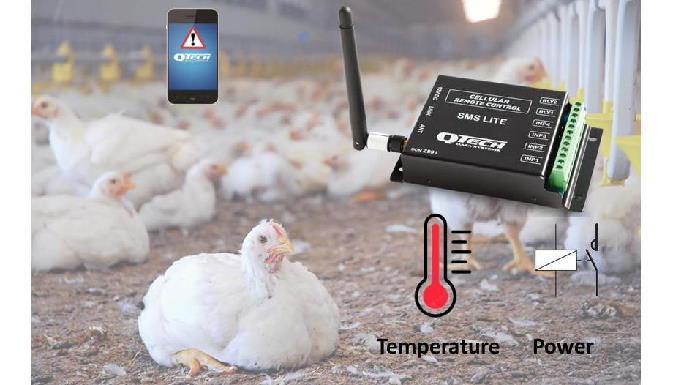
Monitoring the mains electricity supply, ventilation status and temperature are crucial in large scale poultry facilities.
The SMS Lite is the ideal option for sending alarms via text message if the power, ventilation or temperature monitoring sensors are activated.

This Australian Department of Agriculture, Fisheries and Forestry publication
defines requirements and changes that need to be implemented by July 2025.
It includes animal welfare monitoring requirements such as:
- Automatic alarm systems to warn immediately of ventilation failure
- Back-up power supplies
- The ability to detect if the shed temperature is too high or too low and if there is a
power failure in any power supply phase - Appropriate settings so that alarms are easily heard
- All-hours response availability…
The SMS Lite is the solution for animal welfare monitoring by text message
Effective monitoring of power, ventilation and temperature helps prevent tragic damage to the animals, the associated financial losses and the potential fines that would be incurred.
The incoming mains voltage can be monitored with a phase failure relay with an auxiliary alarm contact. This normally open alarm contact is wired into an SMS Lite input.
The temperature sensor is typically an electronic meter with an alarm contact which is mounted in the electrical cabinet. However, even a mechanical thermostat that closes dry contracts at the configured temperature level, could also be used.
By using a small UPS, such as the PowerShield PSDCMin12/18, the SMS Lite will remain operational for several hours during a power outage. This allows the fault situation to be monitored while corrective actions are taken to ensure animal welfare is maintained.
The SMS Lite has a supply voltage monitoring feature which automatically sends a text message when it is low. The voltage can also be checked at any time with a simple “STATUS” text message to the SMS Lite.
Please get in touch now to discuss this or any other SMS based monitoring applications.
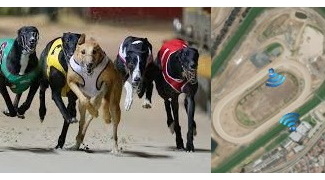
Greyhound racetrack control is another application for our WP2P wireless remote control solution.
The existing underground control cable, which controls the starting gates, was starting to fail making operation unreliable.
A critical requirement for this customer project was avoiding having to dig up the horse racing track which surrounds the greyhound track.
The low power WP2P was used to replace the underground cable.
As the WP2P is a radio system, it prevented disturbing the surface of the adjacent horse track.
The distance from the club room to the starting gate was less than 200m, which is easily within the range of the WP2P systems. With optional high gain antennas, several kilometres can easily be achieved for more demanding applications.
The WP2P has 3 switched inputs and 3 relay outputs, essentially replacing a 6 core cable with a low power radio link.
The track officials can now control the starting gates reliably from the safety of the club rooms.
Interfacing the WP2P outputs to the starting gate wiring is straightforward. The WP2P has normally open, low voltage relay contacts which can be easily integrated into the control circuit by using interface relays.
Please get in touch with the team to discuss your remote control requirement.
Greyhound racetrack control is just one of many applications of the WP2P systems.
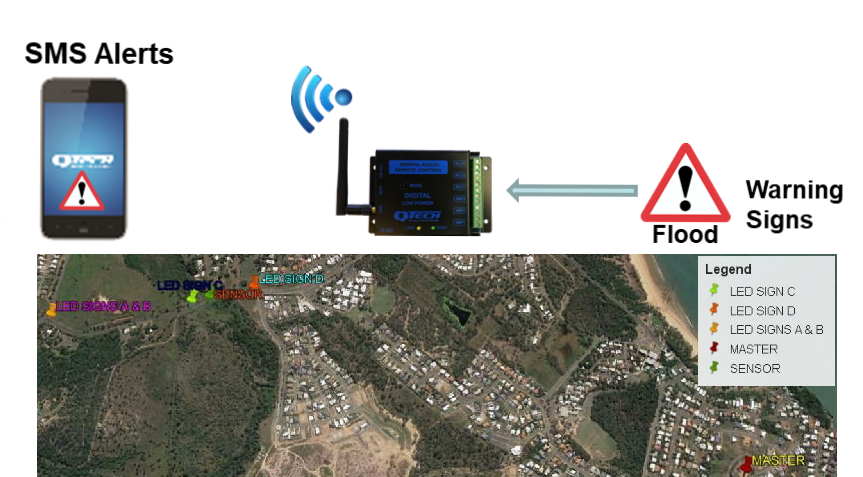
A Shire council approached us for a road closure warning system as part of a flood mitigation plan.
Extreme rainfall is becoming more frequent and it causes disruptive road flooding and public safety concerns.
A system was needed to activate four LED warning signs when the road flooded.
Council required the remote control and monitoring of the LED flood warning signs, which are to be operated from a high level sensor in a local creek.
An efficient, low power radio communication system was needed, together with the ability to send SMS text alerts to staff phones.
After reviewing the Shire council’s requirements, we specified a QTech Multi Point Controller and a 4G SMS Lite as the ideal solution.
To help achieve efficient radio communications, we suggested moving the proposed Master site. The Master was moved to a higher site, which provided good line of sight to all warning signs, as its elevation was over 75m.
The Master is a Multi Point Controller (PD8620) which communicates to four slave radio modules. The slave radios are Wireless Point to Point (WP2P) – Digital radios (PD8810-WP2PE).
Signs A & Sign B only require one radio as they are close to each another.
A WP2P radio was installed at Sign C, Sign D, and the level sensor site.
At the Master a 4G SMS Lite (PD8640-4G) was used to provide cellular communication of any warning activation. Part of the completed installation is below:

Antennas are always an important consideration to achieve reliable communications.
A high gain Collinear antenna (PD9242) is to be installed at the Master and directional Yagi’s (PD9225) at each of the radios.
To ensure good cellular communication the SMS Lite was also specified a high gain collinear (COL7195).
Reception of each point back to the Master was tested and achieved successfully.
There are many types of water level sensors available, including float, ultrasonic and tilt switches. Our wireless road closure warning system simply requires a volt free, contact closure to be wired into the digital input of the WP2P radio module.
In this application, all the WP2P radio modules also have spare inputs and outputs, which could be used for future expansion or system changes. The MPC supports up to eight slave WP2P modules so more could be added.
For assistance or further information, please contact us now.

